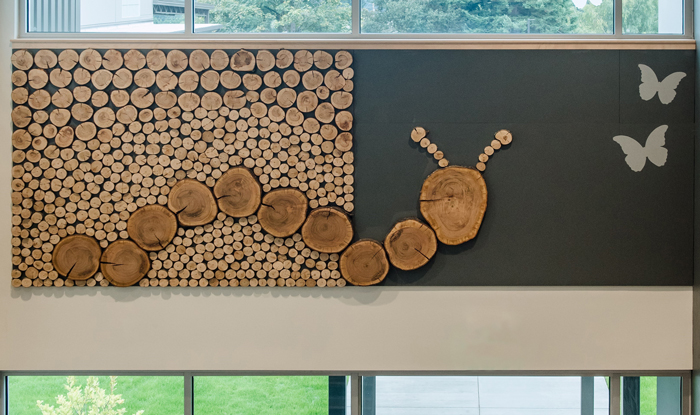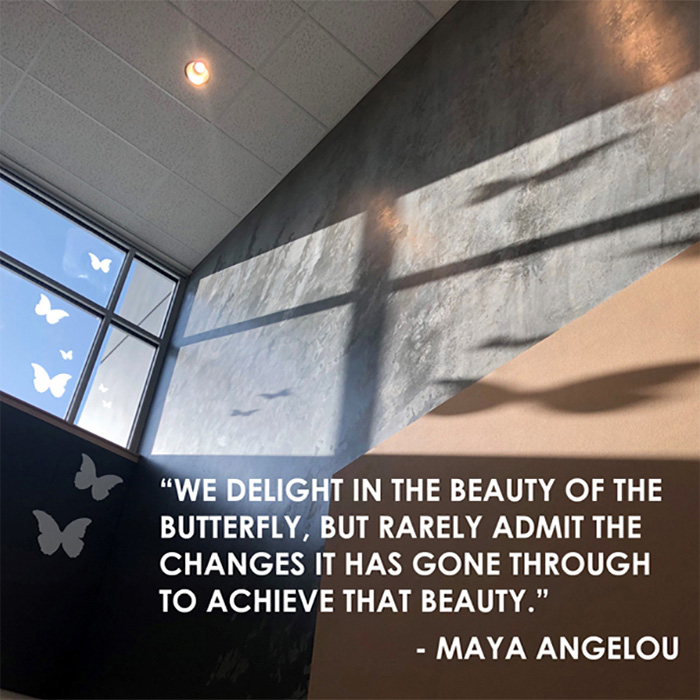Written by Matthew Guthrie, Project Architect | Associate. Reprinted courtesy Cascade Business News (January 2020)
When thinking about architecture, I often recall the words of a former instructor. She described a project as a focused study into the nature of a place and a proposal to make it better. I love the simplicity of the statement, the call to action and most of all, the responsibility needed to know a place. Knowing a place is a challenge in an age where the windows on our devices entice us to look in, rather than out. With the technology we carry with us, we need to be mindful of the difference between information and entertainment, between information and knowledge. Defining knowledge as a practical understanding of a subject, as an awareness, helped provide guidance on a recent architectural project.
Replacing an existing school – with its legacies and memories – is a delicate task. Even tired buildings can develop a sudden charm when their useful lifespan nears its end. The North Gresham Elementary School project was a replacement of an existing school built in the 1960’s. The school featured a central courtyard that was surrounded by classrooms and hallways. Situated in the courtyard were multiple trees. As plans for the new school took shape, school staff began to wonder about the fate of the large cherry tree.
The project team had already identified other elements of the existing school to salvage and protect. The wood floor at the stage was to be removed, sanded and installed on a wall outside the gymnasium. It would provide an acoustic and warm backdrop where the entire community could appreciate a connection to the former school. Special attention was also given to a memorial tree. Not far from the cherry tree was a maple planted in memory of student who passed away. It would be relocated to the new school in its living state.
The cherry tree was something different. The tree did not mark an event or a passing except if you count the number of seasons it had witnessed. It did not belong to anyone. It seemed to always be there like a trusted friend. Teachers observed students reading in its shade and collecting its blossoms. While these memories are picturesque, the tree itself was not very attractive. Years of pruning left its branches spindly over an oversized trunk that had split into two. Coincidentally, these particular characteristics would later prove critical in its transformation, into its giving nature.
In response to the staff’s curiosity about the cherry tree, we began to think about different ways to incorporate it into the new school. Practical concerns about harvesting the wood, the type of cuts, the moisture content and dry times all weighed on the team. These considerations also gave this particular tree its own item number at the weekly construction meetings. Every week for the better part of a year, the cherry tree was mentioned.
After months of discussion, the final design has several complimentary elements. The silhouette of the actual tree was painted faintly on a concrete wall in a shared stairway. The larger wood from the trunk was used to make a caterpillar crawling towards the tree. The smaller wood from branches provided a contrasting backdrop. Butterflies were added via paint and film to the walls and glass. On sunny days, butterfly shadows are cast on to the painted tree. Although the tree is now static, the butterflies move across it. Poetic words from Maya Angelou bring all the elements together and give voice to the power of transformation. I hope the students remember these painted words over the course of their lives and are caught whispering among themselves on sunny days “…the butterflies should be out.”
As architects, to know a place is closely tied to knowing our place. This does not mean to accept things as they are and not seek improvement. Designers are constantly seeking ways to contribute to the betterment of our communities, cultures, and world.
Rather, it means to have sensitivity towards the active legacies and histories already embedded in the nature of a place. It means to help bring out the shared experiences and daily rituals that often get new life and appreciation when change is near. And while the only constant in the world may be change itself, making it transformative reveals what we value and what we choose to teach future generations. For the cherry tree, it was first noticed, then spoken of, and finally became something new.
